Làm sao để sống thọ trên 110 tuổi?
Rachel Nuwer bbc - Sống đến 100 tuổi luôn là dịp để ăn mừng, nhưng ngày nay có quá nhiều người 100 tuổi đến nỗi các nhà khoa học chẳng buồn theo dõi họ nữa. Hồi năm 2012, Liên Hiệp Quốc ước tính có khoảng 316.600 người trên 100 tuổi trên thế giới. Cho đến năm 2050, con số này được dự đoán sẽ tăng lên hơn ba triệu người. 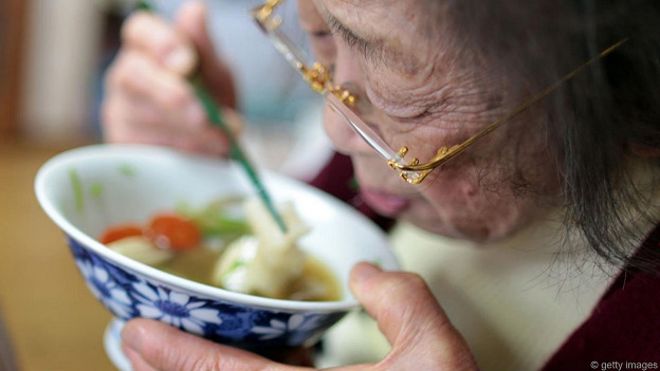
Có một nhóm người còn đặc biệt hơn nữa, đó là những người sống trên 110 tuổi.
Nhóm nghiên cứu lão khoa, một nhóm các nhà nghiên cứu toàn cầu có trụ sở ở Los Angeles, theo dõi dữ liệu của những người cao tuổi nhất trên thế giới. Tính đến cuối tháng Ba 2015, có 53 người trên 110 tuổi hiện đang còn sống. Điều đáng buồn là người lớn tuổi nhất thế giới, cụ bà Misao Okawa ở Nhật Bản, 117 tuổi, đã được thông báo đã qua đời hôm 1/4.
Cụ Okawa sinh vào năm 1898 và hiện nay chỉ còn bốn người còn sống – ba người Mỹ và một người Ý, tất cả đều là nữ, có ngày sinh trước năm 1900.
Điều này có nghĩa là họ đã sống qua ba thế kỷ. Điều làm cho họ đặc biệt là thế giới sẽ phải chờ tới ít nhất là năm 2100 mới có thể có được một "bộ tứ đại thọ" khác - gồm bốn người sống qua ba thế kỷ.
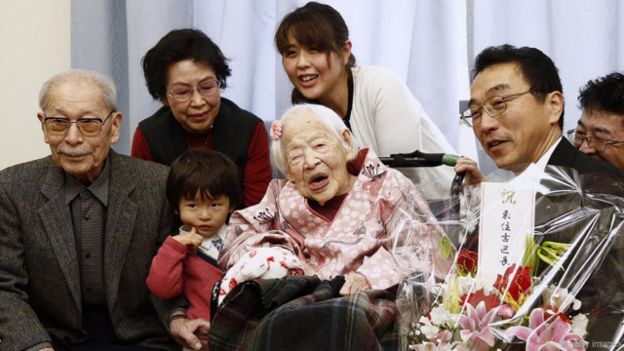 Image captionCụ Misao Okawa, sinh năm 1898, là một trong số ít người sống qua ba thế kỷ (Hình: Getty Images)
Image captionCụ Misao Okawa, sinh năm 1898, là một trong số ít người sống qua ba thế kỷ (Hình: Getty Images) Những người còn lại có thể sẽ ra đi trong vòng chưa tới 10 năm nữa do những người trên 110 tuổi thường chỉ giữ danh hiệu này trong khoảng thời gian ngắn.
Thời gian trôi qua không ngừng nghỉ có nghĩa là những người già nhất trên thế giới sẽ lần lượt ra đi.
Điều này khiến cho các chuyên gia trên trong nhiều lĩnh vực – sinh học, lịch sử, nhân chủng học văn hóa – đang cố gắng tìm hiểu những gì họ có thể từ những người đặc biệt này trong lúc họ vẫn còn sống và những bí quyết giữ gìn sức khỏe họ có thể truyền đạt lại cho chúng ta.
Đồng hồ sinh học chậm
Lý do hiển nhiên nhất để nghiên cứu những người lớn tuổi nhất hiện còn sống là tìm hiểu kinh nghiệm làm sao giữ sức khỏe lúc tuổi già.
Những người trên trăm tuổi ‘dường như sinh ra với đồng hồ sinh học chậm hơn tất cả chúng ta’, Stuart Kim, một nhà sinh học chuyên nghiên cứu về lĩnh vực phát triển sinh học ở Đại học Standford, nói. Khi họ 60 tuổi, họ trông như 40.
Khi họ 90 tuổi, họ chỉ giống như người 70. “Khi anh gặp họ,” Kim nói, “họ có bề ngoài và hoạt động trẻ hơn tuổi thật đến 20 tuổi.”
Hãy xem trường hợp của bà Besse Brown Cooper, sinh năm 1896 ở Tennessee. Bà sống thọ 116 tuổi 100 ngày và lập kỷ lục là người sống thọ thứ 10 từ trước đến nay mà thế giới biết được.
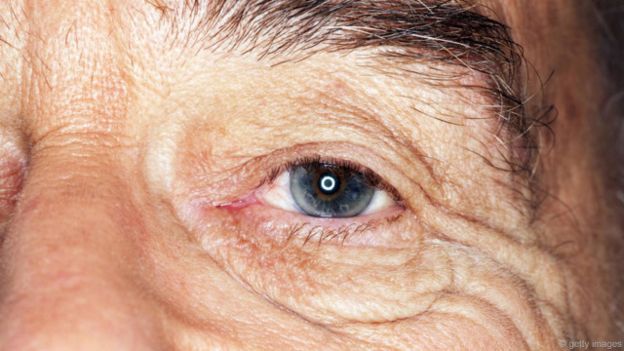
Nhưng mặc dù tuổi tác của cụ Besse có làm cho người ta kinh sợ, bà nội của ông đối với ông không bao giờ có vẻ gì là già.
Bà không gặp chuyện gì để đi khám ở bác sỹ lão khoa. Bà sống ở nhà, ra vườn làm lụng cho tới khi 105 tuổi và bà đọc rất nhiều cho đến khi 113 tuổi.
Yếu tố di truyền
Các nhà nghiên cứu đang cố gắng tìm hiểu về nền tảng di truyền và môi trường vốn là lý do khiến cho cụ Besse sống lâu mà vẫn khỏe.
Đến nay, họ đã biết rằng yếu tố di truyền – tức là ai đó có họ hàng sống thọ – là một trong những yếu tố chính giúp cho họ sống lâu.
“Không có cách nào sống đến 110 tuổi trừ phi bạn sinh ra đã được hưởng may mắn về di truyền,” ông Jay Olshansky, một giáo sư y khoa tại Đại học Illinois, nói.
Tuy nhiên ông và các nhà nghiên cứu khác đã không thể xác định được gien cụ thể quyết định tuổi thọ, một phần là do rất khó có đủ mẫu phẩm để nghiên cứu những người siêu thọ.
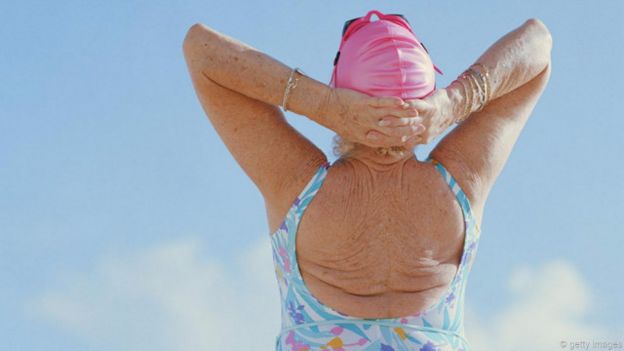 Hình: Getty Images
Hình: Getty Images Theo ông Thomas Perls, một giáo sư y khoa và lão khoa tại Đại học Boston và giám đốc của Nghiên cứu Người trăm tuổi New England tại Trung tâm Y khoa Boston, những nghiên cứu này sẽ không giúp ích nhiều cho chúng ta để có thêm nhiều người sống siêu thọ nữa nhưng sẽ giúp chúng ta tránh được hoặc trì hoãn những chứng bệnh như Alzheimer, đột quỵ, tim mạch và ung thư.
Nói cách khác, có thể sẽ không bao giờ có việc đa số chúng ta sống đến 110 tuổi, nhưng việc hiểu làm sao có người sống được đến mức đó có thể giúp cho phần còn lại của nhân loại tăng cơ hội sống một cuộc sống trọn vẹn hay khỏe mạnh đến tuổi 85 hay 90.
Kho báu lịch sử sống
Giá trị của những người sống siêu thọ đối với xã hội không chỉ là mục tiêu ích kỷ để đem lại lợi lạc cho chúng ta trong cuộc sống tuổi già.
Mỗi một người lớn tuổi là một kho tàng tri thức. Một số người còn gọi họ là kho báu lịch sử sống. Điều quan trọng nữa là những gì họ kể không được lọc lại qua lăng kính của bên thứ ba – nhà sử học, nhà làm phim tài liệu hay nhà báo – do đó rất đáng để ghi lại.
“Đó còn là việc giúp chúng ta hiểu sâu hơn,” Doug Boyd, giám đốc Trung tâm Louie B Nunn về lịch sử truyền miệng tại Thư viện Đại học Kentucky, nói.
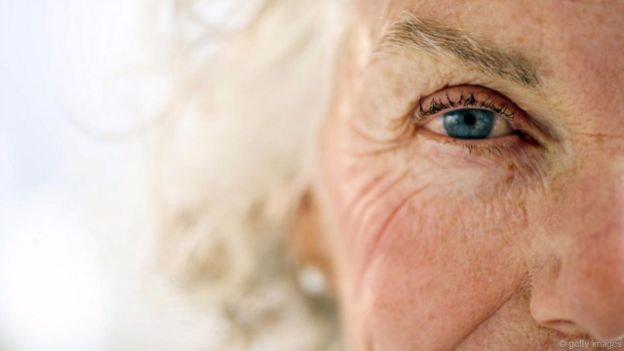 Hình: Getty Images
Hình: Getty Images Đó là lý do tại sao Boyd đang số hóa toàn bộ bộ sưu tập của ông về lịch sử truyền miệng với 9.400 đoạn thâu âm được tổ chức thành hệ thống dữ liệu khoa học và miễn phí.
Khi những câu chuyện này được đưa vào lớp học hay mạng xã hội, chúng sẽ bắt đầu định hình lại cách chúng ta nghĩ về lịch sử và những giá trị về kiến thức và kinh nghiệm sống trong cuộc đời của những người lớn tuổi.
“Tôi thật sự nghĩ rằng chúng ta sẽ bắt đầu có ký ức của công chúng năng động và hiểu biết hơn khi bức tường của lịch sử truyền miệng bắt đầu đổ xuống,” Boyd nói. “Những câu chuyện con người kể lại chuyện đời của họ và đối phó với những vấn đề trong cuộc sống của họ được ghi âm lại trực tiếp sẽ ngày càng có nhiều giá trị văn hóa.”
Góc nhìn khác
Cuộc đời kéo dài cũng giúp cho những người lớn tuổi những nhận định độc đáo về những gì xảy ra ở hiện tại.
“Đó là một góc nhìn rất khác,” Perls nói. Ông nhớ lại một lần trò chuyện với ông Walter Breuning, một người dân Montana sống đến 114 tuổi vào lúc cao điểm của đợt suy thoái kinh tế hồi năm 2008. “Cụ ấy nói với tôi rằng anh nên thử ăn cỏ mỗi ngày như chúng tôi hồi Đại suy thoái và khi đó anh mới thấy bây giờ cuộc sống của anh có tồi tệ hay không.”
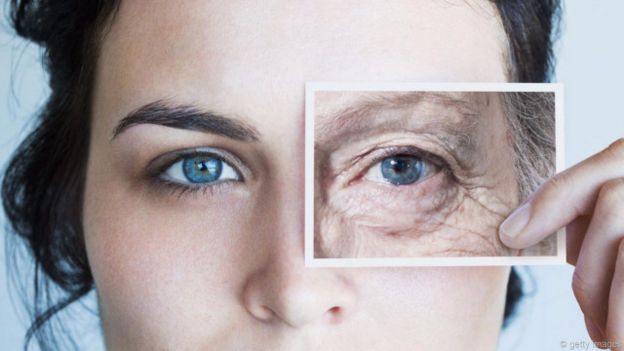 Hình: Getty Images
Hình: Getty Images Sự khôn ngoan của người lớn tuổi là điều mà các nền văn hóa ngoài phương Tây lâu nay vẫn rất trân trọng.
Ở Nhật Bản, 43% người lớn tuổi sống với con cháu – giảm đáng kể qua những thập niên qua – nhưng vẫn vượt xa các nền văn hóa phương Tây.
Bà Mayumi Hayashi, một nhà nghiên cứu tại Viện lão khoa tại Đại học King’s College London, lớn lên trong một gia đình ba thế hệ.
Ông bà của bà yêu thích sự hài hòa, chuộng trật tự cấp bậc trong xã hội và kính trọng hoàng đế Nhật Bản. Họ không ưa những ý kiến mạnh bạo và chủ nghĩa cá nhân. Họ đã đem đến một góc nhìn vào quá khứ của Nhật Bản.
“Văn hóa và giá trị của họ thật sự khác biệt đến nỗi đối với tôi chúng hoàn toàn lỗi thời,” Hayashi nói. “Tuy nhiên, có ông bà sống cạnh bên khi tôi trưởng thành khiến tôi càng ý thức hơn về người lớn tuổi và cho tôi thấy Nhật Bản đã du nhập các giá trị được Mỹ hóa như thế nào.”
Chúng ta thường quan niệm sai lầm là càng lớn tuổi thì con người ta càng yếu đi về mặt sức khỏe và tinh thần.
Nghiên cứu của Olshansky và các đồng sự cho thấy không có dữ liệu chứng minh cho quan niệm nhầm tưởng giữa sức việc sức khỏe đi xuống và tuổi tác cao lên.
“Hầu hết những vấn đề mà chúng ta cho rằng là do tuổi tác thực ra lại không phải là do tuổi tác mà là do những việc chúng ta làm, chẳng hạn như hút thuốc, uống rượu hay béo phì,” Perls nói.
Trên thực tế, nhiều người, thậm chí có những người 85 tuổi hoặc hơn, có sức khỏe như những người trẻ hơn 20 đến 30 tuổi. Tuổi tác theo nhiều các chuyên gia không phải là cách đánh giá đúng về sức khỏe.
Nguồn :
http://www.bbc.com/vietnamese/culture_social/2015/07/150721_the-most-unique-supercentenarians_vert_fut
LESSONS OF THE WORLD’S MOST UNIQUE SUPERCENTENARIANS
There are a handful of people left on Earth who have been alive in three separate centuries, says Rachel Nuwer. What can they – and those of a similarly extreme age – teach us?
By Rachel Nuwer Reaching a hundredth birthday is always cause for celebration, but these days there are so many centenarians around that scientists don’t even bother trying to keep track of them all. Indeed, in 2012 theUnited Nations estimated that there were about 316,600 people over 100 living around the world. By 2050, that number – unbelievably – is expected to rise to over three million.
A much more exclusive club, therefore, are the supercentenarians, or people who live to 110 or older. The Gerontology Research Group, a global team headquartered in Los Angeles, maintains the go-to database for keeping track of the oldest among us. Until this week, there were 53 supercentenarians. Sadly, the death of the oldest, Misao Okawa of Japan, wasannounced on 1 April. She was 117.
Okawa was born in 1898, and there are now just four living people – three Americans and one Italian, all women – who were born before 1900. That is, they have lived to see three centuries. You might call these four people “tricenta-centenarians*” if giving their group a name (although language experts may have a better suggestion), and what makes them unique is that the world won’t see another set until 2100. This loss will likely happen in less than a decade, as supercentenarians tend to hold their venerated title only fleetingly.
Time’s unrelenting march means there’s a steady turnover of the world’s oldest, causing experts across many fields – biology, history, cultural anthropology – to scramble to learn what they can from these extraordinary people while they are still here. And it’s not only their health secrets that they stand to teach us.

It may be time to rethink retirement age - is 70 the new 50? (Credit: Alamy)
The most obvious reason to study the oldest people alive today is for clues to healthy ageing. Supercentenarians often “seem to be born with slower clocks than the rest of us,” says Stuart Kim, a developmental biologist at Stanford University.When Supercentenarians are 60, they appear to be 40; when they are 90, they seem about 70. “When you meet them,” Kim says, “they all look and act 20 years younger than they actually are.”
Take Besse Brown Cooper, born in 1896 in Tennessee, who lived to be 116 and 100 days – setting the record for the 10th-oldest known person ever to have lived. “A lot of people I talk to just howl in horror and say, ‘Oh gosh, I wouldn’t want to live that long!’” says Besse’s grandson, Paul Cooper, who runs a nonprofit named in his grandmother’s honourthat provides support for supercentenarians. But despite the cringes that Besse’s age sometimes inspired, his grandmother, he says, never seemed old to him. She had no cause to visit a geriatric doctor; she lived at home and worked in her garden until age 105; and she was an avid reader until 113. “My grandma showed me that healthy ageing is absolutely phenomenal,” Cooper says. “It’s not something to fear.”
 Misao Okawa, born in 1898, was one of the few people to have lived in three centuries (Credit: Getty Images)
Misao Okawa, born in 1898, was one of the few people to have lived in three centuries (Credit: Getty Images) Researchers are attempting to reveal the genetic and environmental cornerstones that form the basis of Besse and others’ extreme, healthy longevity. So far, they know that heredity – whether a person has long-lived relatives – is one of the main predictors. “There’s no way to make it to 110 unless you win the genetic lottery at birth,” says Jay Olshansky, a professor of public health at the University of Illinois. But he and others have not been able to pin down the particular genes responsible for extreme longevity, partly because it’s difficult to get an adequate sample size for studying supercentenarians. But as more people reach the outer limits of a human lifespan, the studies will increase in robustness.
According to Thomas Perls, a professor of medicine and geriatrics at Boston University and director of the New England Centenarian Study at Boston Medical Center, such research “will yield clues not so much about how to get more people to extreme ages, but how to help them avoid or delay diseases like Alzheimer’s, strokes, heart disease and cancer.” In other words, there will likely never come a time when the majority will make it to 110, but insights gleaned from those who do might help the rest of us increase our odds of living full, healthy lives to 85 or 90.

(Credit: Getty Images)
Supercentenarians’ and centenarians’ value to society, however, does not end with the somewhat selfish pursuit of using them to figure out how to make our own old ages more enjoyable. Every elder contains a wealth of knowledge, leading some to refer to them as living historical treasures. Importantly, their personal accounts are not filtered through the lens of what a third party – a historian, a documentary filmmaker, a journalist – deems worthy of recording. Unedited, first-hand insight is something that has been largely absent from the official history record until relatively recently, says Doug Boyd, director of the Louie B Nunn Center for Oral History at the University of Kentucky Libraries.
“It’s also about attaining a deeper meaning and understanding,” Boyd continues. As decades pass, people are better able to see the forest through the trees of everyday living, to organise their thoughts and to derive lessons and understanding from life’s ups and downs. Often, their stories also convey a complexity of feeling that is lost in second or third-hand accounts.

In some cases, health decline may have more to do with lifestyle than years lived (Credit: Getty Images)
“We can be moved by a film, but not to the same degree as when we hear something directly from another person,” Cooper says. “The depth of emotion that is conveyed when someone tells you a story face-to-face is irreplaceable.”
That’s why Boyd is digitising his entire collection of oral histories, with 9,400-plus recordings into a searchable, freely available database. Instead of 500 people accessing the collection each year, now users top 8,000 per month. As those stories make their way into high school classrooms, podcasts and social media, they could start to shape the way we think about history – and the lifetime’s worth of knowledge and experience held within older people. “I really do think that a more informed, dynamic public memory is going to emerge as we start to see the walls of oral history archives coming down,” Boyd says. “The recorded human voice telling stories and grappling with life’s questions firsthand will take on an ever increasing cultural value.”
Years of experience can also give older people a unique take on current events. “It’s really a very different perspective,” adds Perls, who recalls a conversation he had at the height of the economic recession, in 2008, with Walter Breuning, a Montana native who lived to be 114. “He told me, ‘You should try eating grass every day for a year like we did in Great Falls during the Depression, and then let’s see if you think you’re bad off now.’” Quite.

The wisdom of elders is, of course, something that cultures outside the West have long taken to heart. In Japan, 43% of seniors live with their children – a figure that has declined drastically over the past few decades, but still far exceeds that of Western cultures. Mayumi Hayashi, a research fellow at the Institute of Gerontology at King’s College London, grew up in a three-generational household. Her grandparents – with their love of harmony, hierarchy and the emperor, and their distaste for strong opinions and individualism – provided a window into Japan’s past. Their generation represented the last living vestiges of traditional Japanese society, which took a dramatic turn after World War II. “Their culture and their values were so different and, to me, seemed completely old-fashioned,” Hayashi says. “But having my grandparents around while I was growing up made me more aware of older people and also showed me how quickly Japan had bought into Americanised ideas.”
Or as Olshansky puts it: “Would we all benefit from spending more time with wiser, smarter, older people? Yes, absolutely.”
 In Japan, the elderly often live with their younger family (Credit: Getty Images)
In Japan, the elderly often live with their younger family (Credit: Getty Images) One major misconception about ageing that centenarians challenge is that growing old automatically entails physical and mental impairments. ButOlshansky and his colleagues have found that the presumed link between declining health and age does not stand up to real-world data. “Most of what we think are age-associated problems are not due to ageing itself but to the things we do to ourselves, like smoking, drinking too much or being overweight,” Perls says. “Those are the things that lead to the disabilities that we see with ageing.” In reality, many people – even those who are 85 and older – have the same health and fitness profiles as those who are 20 to 30 years younger. Chronological age, a growing number of experts argue, is not a valid form of measuring health.
“I think most would agree that they’d much rather have a healthy 70-year-old who’s had 30 years of experience at the controls of a 747 than some new guy,” Perls says.
 Ephraim Engleman, 103, still works as a doctor(Credit: Corbis)
Ephraim Engleman, 103, still works as a doctor(Credit: Corbis) Holding a job at 70 or 80, however, is very different than doing so at 100. Yet there are striking examples of people who did successfully carry on working after they hit the century mark. Ephraim Engleman, 103, a rheumatologist, still sees patients at his University of California, San Francisco, office, where he also directs the Rosalind Russell Medical Research Center for Arthritis. He says he has no plans to retire. He’s not the first physician to demonstrate such strong work ethic. W G “Curly” Watson, a doctor from Augusta, Georgia, practiced medicine until he died at the age of 102, having delivered some 15,000 babies over his 50-year career. And Leila Denmark, who was the only woman in her medical school class of 1928, worked as a physician until the age of 103 and then enjoyed a 10-year retirement until her death at 113.
Our senior citizen future
Despite all that the elderly can contribute, old age is sometimes seen as something to be either ignored or feared. Ageism will probably never be defeated entirely, but the age at which societal discrimination begins may soon be pushed back, as already evidenced by phrases like “70 is the new 50.” As more and more people in their 80s and 90s lead rich, full lives, Perls says, that phrase will likely continue to be adjusted accordingly.
 Centenarians are so common now that it's difficult to keep track worldwide (Credit: Getty Images)
Centenarians are so common now that it's difficult to keep track worldwide (Credit: Getty Images)In Japan, that already seems to be happening. “Ninety isn’t old in the Japanese sense,” Hayashi says. “Around 100-plus? Then we celebrate.” This is likely because older people are omnipresent in that country, where one in four citizens are over the age of 65 – nearly 55,000 of which are centenarians. They are also an exceptionally active group. When Hayashi gets up at sunrise in Japan, she finds the streets crowded with older couples and singles out for their morning stroll. After their morning walk, many Japanese retirees then spend their day working as volunteers, where they regularly interact with younger people. Theirs is also the only country in the world that has a formal bank holidaydedicated to honouring all older people.
Japan can serve as a positive example of what is possible as other populations around the world mature. While the number of people who must move into nursing homes will rise dramatically, so, too, will the number of vibrant, fully engaged senior citizens who continue to live at home unaided and work or volunteer well into their 80s, 90s or even 100s. This will likely be especially true as the first wave of baby boomers begins to crash against the retirement wall. As Olshansky says: “We consider ourselves rebels, those of us from the 70s. I can assure you, we’re going to protest age discrimination.”
“We’ll change things,” he says, “and you younger people will benefit.”
 Daniel Doan*Paula Le*Kimmy Nguyen
Daniel Doan*Paula Le*Kimmy NguyenShare this story on Facebook, Google+ or Twitter.
http://www.bbc.com/future/story/20150331-the-most-unique-supercentenarians
Không có nhận xét nào:
Đăng nhận xét